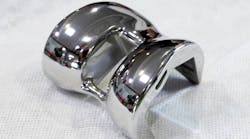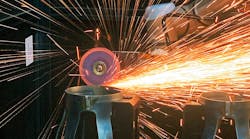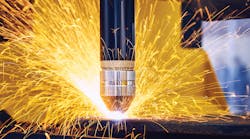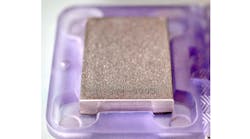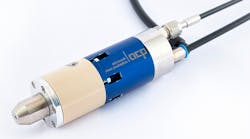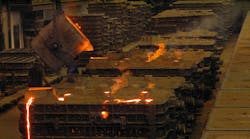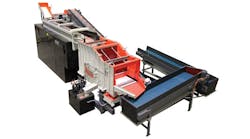A surprisingly large number of automakers and their Tier One suppliers depend on Kovolis Hedvikov a.s. for complex aluminum diecastings, which are installed as critical parts in multiple OEM platforms, including engine brackets and accessories, drive and brake system parts, heat exchangers, compressors, turbos, steering system components, and many more applications. Now in operation for over 200 years, the Czech manufacturer has focused entirely on cast aluminum parts since 1945. Today, Kovolis processes nine different aluminum alloys into parts weighing 200 g to 8 kg (7 ounces to 18 lbs.), via vacuum investment casting and rheocasting (i.e., “semi-solid casting.”)
In addition to casting, Kovolis offers finish machining, heat treatment, and surface finishing. Considering the variety and volume of parts that Kovolis manufactures, there are continuity problems inherent to maintaining high productivity in all these production centers. In order to expand capacity and achieve more flexibility in the overall manufacturing process, the plant has implemented a new vibratory finishing system that handles a variety of workpieces, and has been custom engineered to fit into the available space at the plant.
Larger, more delicate parts — “Our product portfolio underwent a drastic change in recent years,” according to Jiri Buzek, manager of foundry III at Kovolis, explaining the need for a new vibratory finishing system. “The trend goes more and more to larger and more delicate components, which require a vibratory finishing step after punch deburring, for downstream handling. Our existing finishing system was not designed for this, and also had reached the end of its productive service life.”
The new system had not only to handle larger workpieces, but also to provide a gentler finishing process, while maintaining high uptime and cost efficiency for production and process equipment. Furthermore, it had to be integrated into Kovolis’ existing manufacturing operation, and coordinate with the existing workpiece loading device and hot air belt drier.
Planning engineers at Kovolis submitted these specifications to two finishing equipment suppliers: “We decided to go with the Rosler continuous feed vibratory finishing system, because it offers ample capacity, and Rosler met all our special technical requirements,” according to Buzek. “Of course, the fact that our company has had excellent experience with other equipment from the same supplier certainly helped.”
Another Important factor in the equipment selection was that Rosler also can supply all compounds and finishing media to the customer, which makes the finishing process highly adaptable to the customer’s workpieces.
Automatic feeding every 30 seconds
Rosler’s continuous-feed finishing system consists of a linear continuous feed machine (type R 550/4600 DA) with a usable length of 4.6 meters (15 ft.) The functions of the existing workpiece loading system and hot-air belt drier were integrated into the overall system controls of the finishing process. “Rosler met all our technical requirements and provided valuable support in optimizing our finishing process,” Buzek explained.
About 30 different workpieces with a maximum diameter of 300 mm (12 inches) are currently processed in the R 550/4600 DA. Because it can handle parts with diameters of up to 400 mm (16 inches), the machine offers a high degree of flexibility for future production program changes or additions. More than that, the automatic workpiece loading sequence can be modified easily to incorporate a new workpiece loading system, which may be installed at a later time.
Depending on the specific individual designs, castings are fed into the finishing system at cycle times between 30 and 60 seconds. The single curve U-shaped cross section of the processing channel guarantees optimal movement of media and workpieces through the machine. This novel design and the use of high-performance, type RKM plastic media achieves exceptionally high quality finishing results, with a maximum processing time of eight minutes.
Processing time can be adjusted simply by increasing the inclination of the processing bowl. Compared to systems with a separate vibratory discharge channel, the workpieces are travelling through the machine at a constant speed. This prevents any jams, which could damage the workpieces.
Separation and rinsing station — To prevent any damage to the delicate workpieces during the separation cycle, a multi-deck vibratory screening unit was adopted, which contains two steps with minimal drop heights. The undersize media classification system is equipped with an adjustable bar screen, which allows Kovolis to decide at which dimensions undersize media must be discharged.
Because the finished castings do not undergo a separate cleaning step to remove media fines from their surface, the separation unit is equipped with a spray-rinse station. After the workpieces have passed through the hot air belt drier, they go straight to packaging or machining.
Centrifuging process water — In addition to the R 550/4600 DA finishing machine Kovolis also purchased a fully automatic, Z 1000 centrifuge, for cleaning process water. Besides the new finishing system this unit also handles all the plant’s existing rotary vibrators. With a centrifugal force of up to 2,000 g, the centrifuge removes solid particles larger than 2 µm from the process water.
Discharge of the sludge (which may weigh up to 66 lbs.) from the rotating drum is a fully automatic process. In other centrifugal systems a peeling knife is constantly rotating with the drum; the Z 1000 is equipped with a stationary peeling knife. During the peeling cycle the knife pneumatically moves to the inner wall of the slowly rotating drum and removes the sludge without placing any additional load on the drum bearings. Once this cycle is completed, the drum lining is cleaned by a spray rinse system. This prevents any additional sludge deposits during subsequent peeling cycles that might lead to an imbalance, and cause premature wear of the drum bearings.
“In the past we cleaned our process water chemically or with a semi-automatic centrifuge. This was highly labor intensive and costly,” Buzek concluded. “With respect to process water-cleaning Rosler provided us again with the optimal solution. We are certain that with the new equipment we will not only improve the quality of our finishing operation but, at the same time, will become more cost efficient.”
Learn more at www.rosler.us

